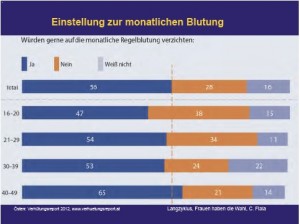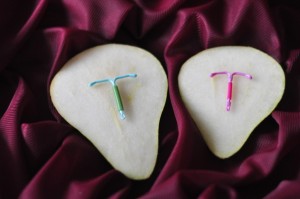There are days or moments…
When your period comes at a really inconvenient time, like when you’re on holidays, playing sports, or starting a new romance. Whether you’re in a relationship or not, your period can still prevent you from enjoying life to the fullest, or it can increase the stress and responsibilities of school or work, or taking care of your family.
Periods don’t have to come every month!
- Many women would like to have less often their period. You can decide yourself.
- When women take the pill, the ring or the patch continuously (So-called long-cycle), they have a bleeding only 2 to 4 times a year – depending on how often they make 1 week off.
- With the IUD most women have less bleeding (and pain) and many women no longer bleeding.
A long cycle is medically safe, has many benefits and after discontinuation of contraception, it comes quickly back to regular cycles.
No more dusty myths about the period!!

 The only rule is that the endometrium should be expelled every 6 months.
The only rule is that the endometrium should be expelled every 6 months.
 A hormone-releasing IUD (intrauterine device) has little influence on the natural cycle – ovulation continues to take place. The IUD does cause a slight buildup of the endometrium during the monthly cycle. Most women will experience shorter, lighter, and less painful periods.
A hormone-releasing IUD (intrauterine device) has little influence on the natural cycle – ovulation continues to take place. The IUD does cause a slight buildup of the endometrium during the monthly cycle. Most women will experience shorter, lighter, and less painful periods.